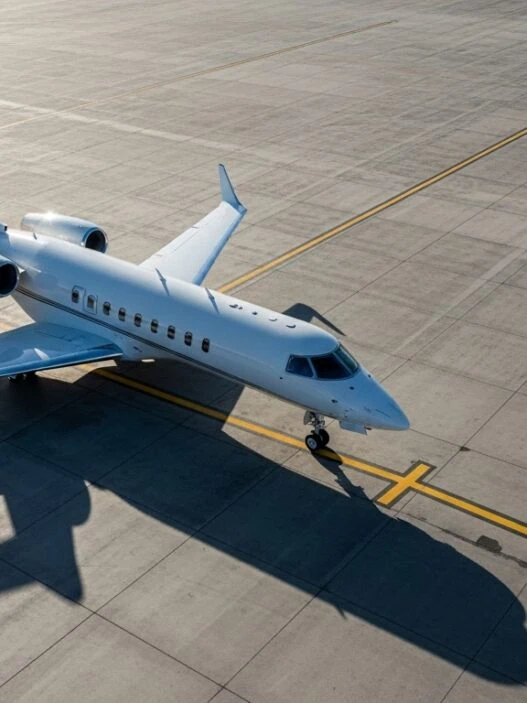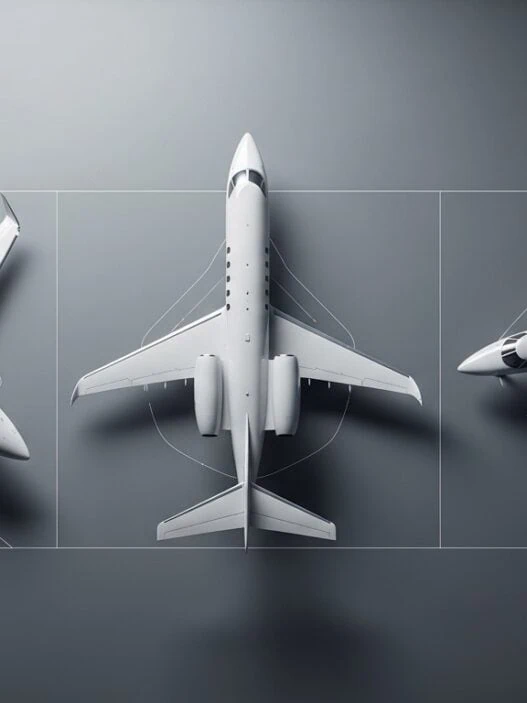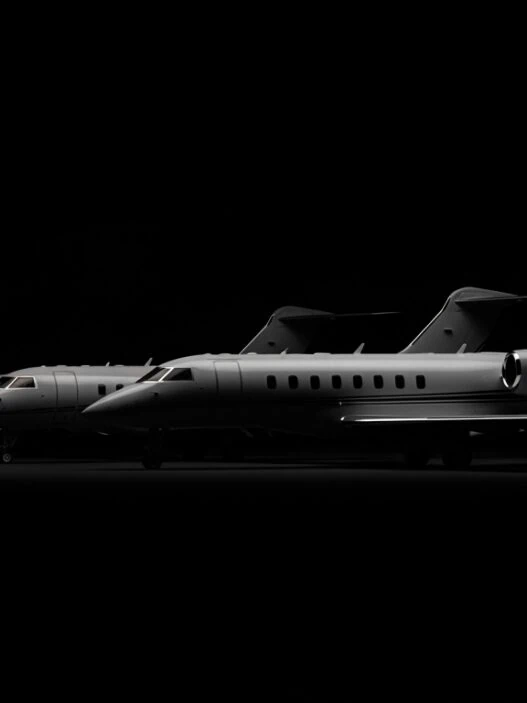Private aviation’s discretion extends beyond passenger privacy to operational stealth, where noise abatement rules determine access to the world’s most exclusive airports. From St. Tropez’s luxury villa proximity to London City’s financial district constraints, airports worldwide implement strict noise regulations that reshape flight planning, aircraft selection, and operational timing for discerning travelers.
These regulations transcend simple compliance requirements, becoming strategic considerations that influence everything from aircraft acquisition decisions to itinerary planning. Understanding noise abatement rules enables seamless access to restricted destinations while maintaining the operational efficiency that defines premium private aviation experiences.
The Strategic Importance of Noise Abatement Compliance
Noise abatement rules at premium destinations directly impact private aviation accessibility and operational costs. Violations can result in substantial fines, landing restrictions, or permanent bans that effectively eliminate access to strategic airports. For operators serving ultra-high-net-worth individuals, compliance failures can damage reputation and client relationships irreparably.
The financial implications of noise abatement violations extend beyond immediate penalties. Insurance premiums increase for operators with compliance violations, while repeated infractions can result in exclusion from preferred operator programs at restricted airports. These consequences create cascading effects that impact operational flexibility and market positioning.
Airports implement noise abatement rules based on community pressure, environmental regulations, and legal settlements with local residents. According to Federal Aviation Administration noise standards, Stage 4 certification represents the current benchmark for acceptable aircraft noise levels at regulated airports. Understanding the underlying motivations helps operators develop compliance strategies that align with airport objectives while maintaining operational efficiency.
Critical Noise-Restricted Airports and Compliance Requirements
St. Tropez (LFBT) enforces among the world’s strictest private aviation noise abatement rules, with 65-decibel limits and comprehensive curfews from 22:00 to 06:00. The airport’s proximity to luxury real estate and exclusive resorts creates zero tolerance for violations, making aircraft selection and timing critical for successful operations.
Compliance at St. Tropez requires Stage 4 noise-certified aircraft with documented performance data demonstrating adherence to the 65-decibel threshold. Operators must submit detailed flight plans showing noise-optimized approach profiles and verify ground support equipment meets acoustic standards. The regulatory framework treats noise abatement as environmental protection rather than operational convenience.
London City Airport (LCY) presents unique noise abatement challenges due to its urban location and steep approach requirements. The London City Airport noise procedures mandate a 5.5-degree approach angle for obstacle clearance, creating acoustic signatures that standard noise abatement procedures cannot adequately address. Aircraft must demonstrate specific performance capabilities under these operating conditions.
The airport’s 75-decibel limit applies during operational hours, with absolute prohibitions after 23:30 except for emergency situations. Night restrictions eliminate scheduling flexibility that private aviation typically enjoys, requiring operators to coordinate complex logistics within compressed timeframes while maintaining service quality expectations.
Santa Monica Airport (SMO) implements 70-decibel limits with strict enforcement mechanisms including acoustic monitoring and automatic violation detection. The airport’s coastal location amplifies noise concerns due to residential density and environmental sensitivity, creating political pressure that influences enforcement priorities.
Aircraft Selection for Noise Compliance
Modern private aircraft design increasingly emphasizes noise reduction alongside traditional performance metrics. The Gulfstream G700 achieves 65-decibel compliance through advanced engine technology and aerodynamic optimization, making it suitable for the most restrictive airports while maintaining long-range capability and luxury amenities.

The Embraer Phenom 300E represents optimal noise abatement performance in the light jet category, achieving 68-decibel ratings through high-bypass turbofan engines and advanced acoustic engineering. Its performance enables access to urban airports where larger aircraft face restrictions, providing operational flexibility for shorter routes and noise-sensitive destinations.
Aircraft manufacturers increasingly integrate noise abatement considerations into design specifications rather than treating them as aftermarket modifications. This evolution reflects market demand from operators serving clients who prioritize access to restricted airports over pure performance metrics.
Stage 4 noise certification has become essential for private aviation operations at premium airports. This standard, defined by the International Civil Aviation Organization, represents current technology benchmarks for noise reduction and serves as the minimum acceptable performance level for most restricted airports. Aircraft lacking Stage 4 certification face operational limitations that impact route planning and client service capabilities.
Advanced Flight Planning for Noise Abatement
Contemporary noise abatement flight planning utilizes sophisticated modeling software that simulates acoustic footprints based on aircraft type, weather conditions, and approach profiles. These systems enable operators to optimize flight paths for noise minimization while maintaining safety and efficiency standards required for private aviation operations.
Continuous descent approaches represent the most effective noise abatement technique, allowing aircraft to reduce power settings during descent while maintaining stable flight characteristics. This procedure requires coordination between pilots, air traffic control, and airport operations to ensure compatibility with standard traffic flows and safety requirements.
Operators increasingly utilize artificial intelligence for noise abatement optimization, processing real-time weather data, traffic patterns, and acoustic conditions to recommend approach modifications that minimize noise impact. These systems integrate with flight management computers to provide automated guidance that reduces pilot workload while enhancing compliance performance.
The integration of noise abatement planning with private jet membership programs enables operators to provide consistent compliance across multiple aircraft types and destinations. Members benefit from standardized procedures that ensure access to restricted airports regardless of specific aircraft assignment or routing requirements.
Operational Strategies for Noise-Sensitive Destinations
Successful noise abatement operations require comprehensive strategies that extend beyond aircraft selection and flight planning. Ground operations, maintenance procedures, and support equipment must meet acoustic standards that complement airborne noise reduction efforts. This holistic approach ensures consistent compliance across all operational phases.
Timing coordination becomes critical for airports with curfew restrictions, requiring precise scheduling that accounts for potential delays, weather impacts, and air traffic control constraints. Operators develop contingency plans that provide alternative airports and routing options when primary destinations become unavailable due to noise restrictions.
For clients considering aircraft acquisition, understanding noise abatement requirements influences decisions between aircraft types and operational capabilities. The private jet ownership guide 2025 includes noise performance as a key evaluation criterion alongside traditional factors like range, capacity, and operating costs.
Case Study: Mediterranean Noise Compliance Strategy
A comprehensive Mediterranean itinerary demonstrates sophisticated noise abatement planning for multiple restricted airports. The routing includes Nice, St. Tropez, and Monaco, each with distinct noise requirements that influence aircraft selection and operational timing.
The Bombardier Global 6000 provides an optimal platform for this routing, offering Stage 4 noise certification with sufficient range and cabin amenities for the multi-destination itinerary. Its proven performance capabilities enable compliance at all Mediterranean destinations while maintaining operational efficiency.
Flight planning utilizes continuous descent approaches at each airport, coordinated with local air traffic control to minimize noise impact during approach and departure phases. Ground operations include acoustic-optimized support equipment and expedited handling procedures that reduce ground time and associated noise exposure.
The operational complexity of this itinerary demonstrates advantages of professional charter operators versus private jet vs first class commercial alternatives, where scheduling flexibility and route optimization provide access that scheduled airlines cannot match for noise-restricted destinations.
Comparative Analysis of Charter Operators
Leading charter operators differentiate themselves through noise abatement expertise and compliance capabilities. NetJets and VistaJet maintain comprehensive databases of aircraft noise performance and airport restrictions, enabling immediate compliance verification for any requested routing. The NetJets vs VistaJets comparison reveals distinct approaches to noise abatement management and fleet optimization.
Operator selection criteria should include noise compliance track records, fleet noise certification status, and pilot training programs that emphasize acoustic optimization techniques. These factors directly impact operational success at restricted airports and client satisfaction with seamless access to exclusive destinations.
Technology Integration and Future Developments
Emerging technologies promise enhanced noise abatement capabilities through electric propulsion systems, advanced materials, and aerodynamic innovations. Electric aircraft development specifically targets noise reduction as a primary design objective, potentially eliminating acoustic restrictions that currently limit private aviation access.
Blockchain-based compliance verification systems provide immutable records of noise abatement performance, enabling automatic verification of compliance history for operators seeking access to restricted airports. These systems streamline approval processes while providing transparency that builds trust with airport authorities and local communities.
Regulatory Trends and Industry Evolution
International harmonization of noise standards simplifies compliance for operators serving multiple jurisdictions. The European Aviation Safety Agency noise regulations coordinate with ICAO standards to provide consistency across major private aviation destinations, reducing complexity for operators and aircraft manufacturers while ensuring environmental protection.
Environmental pressure continues driving stricter noise abatement requirements at airports worldwide. Operators must anticipate evolving standards and invest in aircraft and procedures that exceed current requirements to ensure continued access to premium destinations as regulations tighten.
Strategic Recommendations for Noise Abatement Excellence
Successful noise abatement requires proactive planning that integrates compliance considerations into all operational aspects. Operators should maintain current databases of airport restrictions, invest in pilot training for noise-optimized procedures, and select aircraft based on future regulatory trends rather than current minimums.
Client education about noise abatement enhances understanding of operational constraints and timing requirements that ensure successful access to restricted destinations. Transparent communication about compliance procedures builds confidence in operator expertise while setting appropriate expectations for scheduling flexibility.
Within the evolving landscape of private aviation, noise abatement represents both operational challenge and competitive differentiator. Operators who excel in noise compliance gain access to exclusive destinations while building reputation for discretion and environmental responsibility that appeals to sophisticated clientele seeking seamless, silent travel experiences.




















